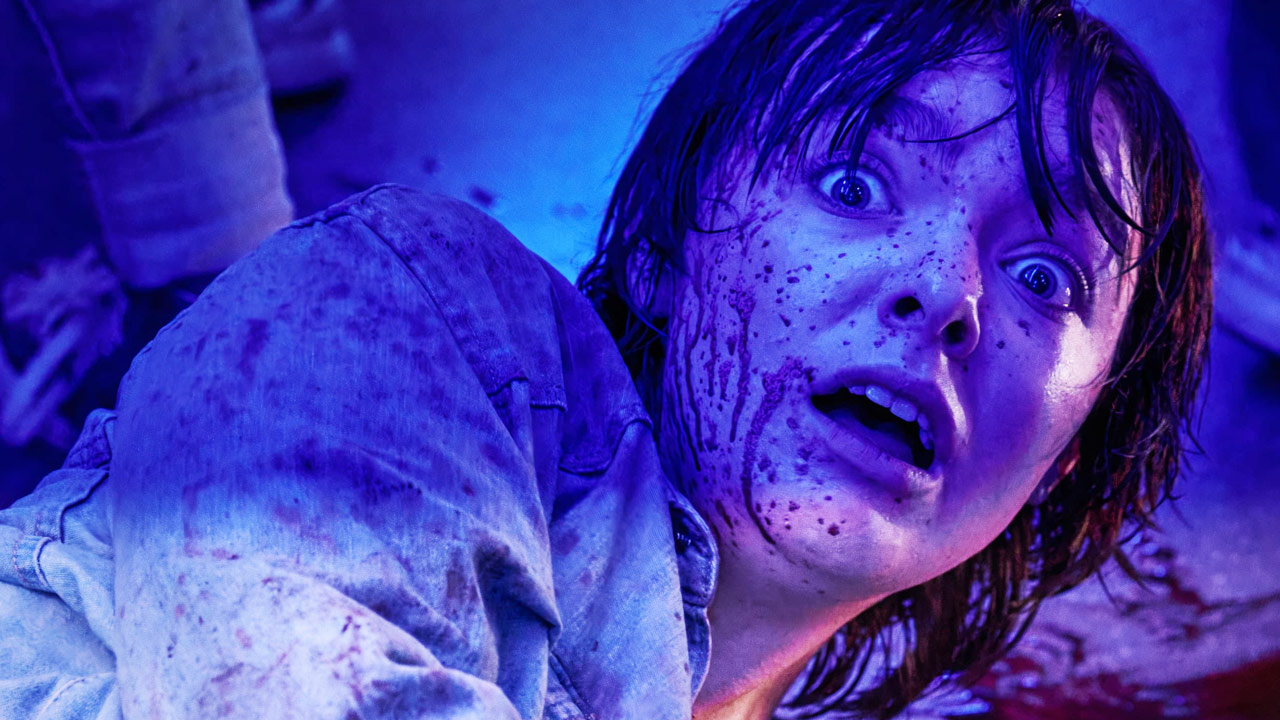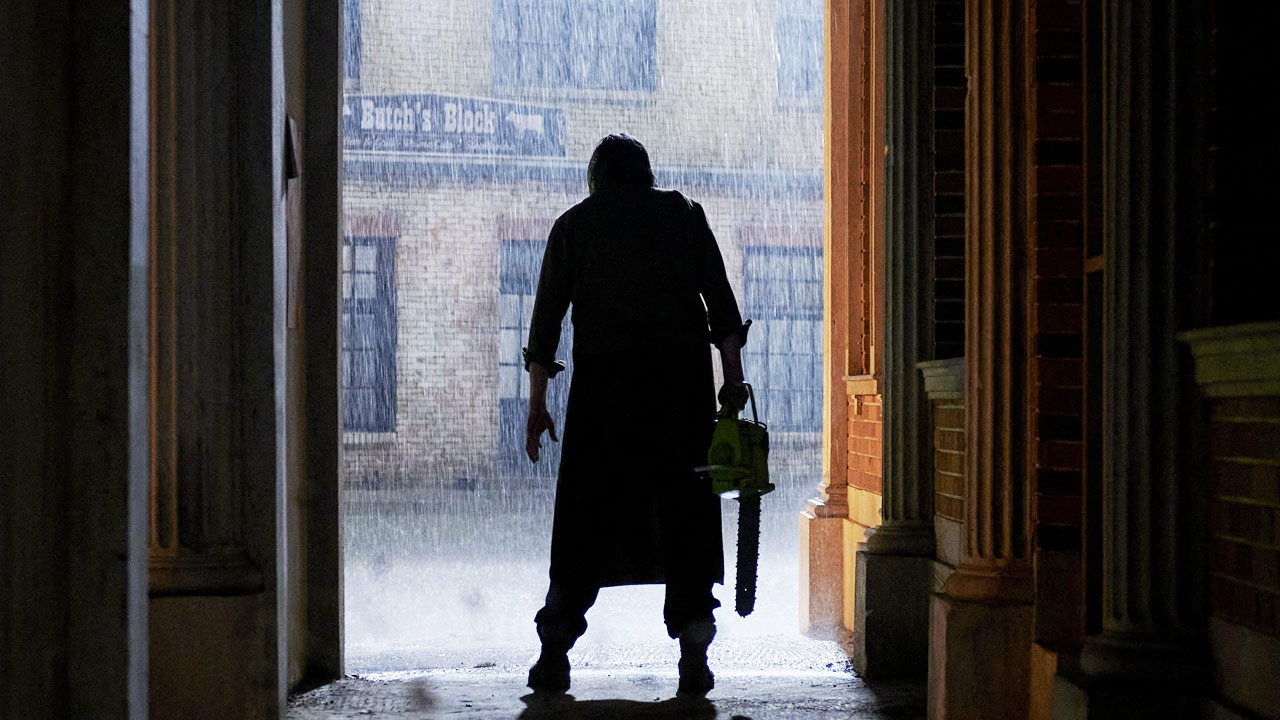It’s hipsters vs hicks again in the underwhelming Texas Chainsaw Massacre reboot

Netflix’s new The Texas Chainsaw Massacre reboot is cinematically staged, but repetitive and indicative of a wider problem in horror films about bumpkins versus city slickers, says Luke Buckmaster.
The answer to the question of when audiences will tire of watching young city slickers get violently murdered by hicks wielding sharp instruments is, of course, absolutely never, as Netflix’s new Texas Chainsaw Massacre reboot reminds us. Some of these instruments are name-dropped in the introductory sequence, a promo for a TV documentary recapping the original killings (ooo, meta!) and the weapons used therein: “hammers, meat hooks, and most disturbingly, a chainsaw.” For old mate Leatherface this is raindrops on roses, whiskers on kittens…
The promo is a camouflaged exposition dump, bringing up to speed a younger generation who probably haven’t seen Tobe Hooper’s 1974 original (though there have been many others), in which the primary villain is a large mute man who discovered chainsaws don’t just have to be used to cut down trees. Lila (Elsie Kate Fisher) observes the advert while perusing the aisles of a servo, one headphone in her ear, while clutching some snacks; it’s just another piece of content vying for her attention in a saturated world.
When Lila and her fellow Gen Z companions—big sister Melody (Sarah Yarkin) and couple Dante (Jacob Latimore) and Ruth (Nell Hudson)—enter the sleepy town of Harlow, a local cop asks them to “please be respectful,” acknowledging the “we don’t like your kind ‘round here” dynamic works both ways: the hicks hate the hipsters and the feeling is mutual. The group have snapped up property in the area, planning to auction it off with a vision of turning Nowheresville USA into a trendy and gentrified place.
Seems a stretch, and that KKK flag won’t woo any purchasers. But the narrative purpose of their enterprise is to fill the neighbourhood with fresh meat for the villain, whose famous fashion sense invites a different perspective on the red carpet question “who are you wearing?” Director David Blue Garcia brings an onslaught of gruesome kills, none half as scary as the hitchhiker scene from the original, when the characters pick up a perturbed young man who delivers an awful monologue then self-harms in their van.
This is the scene that’s remained most vivid in my recollection, as memories of that awful inaugural instalment dimmed. Hooper’s film has a rough documentary-esque texture the remake was never going to emulate, with its fast and finessed modern visual template. However the biggest problem in Garcia’s reboot doesn’t relate to how the genre has changed since the 70s, but the ways this film (and others) hasn’t—rehashing a tired perspective on rural versus city animosity.

In recent times horror has commented on contemporary issues such as racism (Get Out, Us), class warfare (The Purge franchise), STDs (It Follows), coming-of-age (Raw) and womanhood (The Witch) among others. But when it comes to hipsters ‘n’ hicks (good name for a themed restaurant?) the genre tends to feel caught in a state of paralysis. What more can it say?
One notable exception is the innovative 2011 comedy Tucker and Dale vs. Evil, which has one of horror’s most interesting villains—the “bad guys” being preconceptions held by the metropolitan characters. The grubby titular bumpkins are actually very sweet, albeit continuously misunderstood by the holidaying youngsters visiting their home town. The hysterical reactions the city slickers have to Tucker and Dale’s presence inadvertently results in them dying in grotesque accidental deaths—for instance, one runs away in panic then gets impaled on a piece of wood.
The film’s message (before it cheats its premise and ushers in a more conventional villain) is that our biases and preconceptions are our own worst enemy. In The Texas Chainsaw Massacre, the characters’ worst enemy is simply the dude with the blood-stained smock, the chainsaw, the mask made of human flesh. That mask gives him a chilling vagueness: he is nobody; he is everybody; he is a thousand “pure evil” antagonists rolled into one.
It’s clear by the end of this handsomely shot (by cinematographer Ricardo Diaz) but empty and repetitive redux that Leatherface stands for Leatherface: a cultural icon merely reflecting his own iconography. Uninterested in interrogating why we should care, Garcia turns to legend-homaging and self-referencing: for instance a handsomely framed close-up of Leatherface’s chainsaw being placed on a dirty wooden floor—the visual equivalent, almost, of a title drop.
There’s also a scene on a bus, illuminated in thick blue light while it rains outside, because cinematic. One man holds a live-streaming smartphone up to Leatherface and says: “try anything and you’re cancelled, bro.” It’s a moment so on the nose—and so out of place—I instantly regretted wanting any social commentary at all. The legend of the killer hick prevails, and the hipsters live to die another day.


















